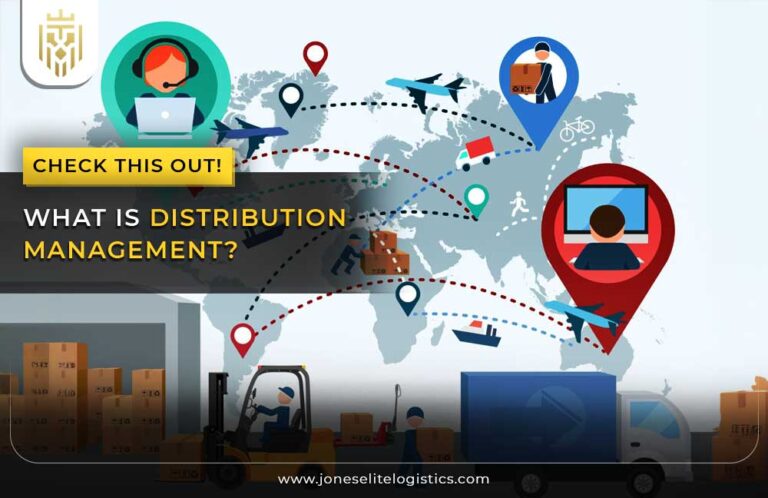What is Global Supply Chain Management:
Global Supply Chain Management encompasses the operations involved from transferring products and services across international borders to perfecting last-mile delivery and achieving an optimal level of customer satisfaction. This means carefully coordinating the logistics of raw materials, production, and shipping, ensuring that all steps align to meet demands on a global scale.

Objectives of Global Supply Chain Management:
Among the goals of global supply chain management are increasing operational efficiency and performance of the supply chain , reducing costs, optimizing of inventory levels, improving customer experience through decreasing wasted time and effort, and fostering cooperation among supply chain participants to adjust to new market instability.
Principles of Global Supply Chain Management:
The fundamentals of global supply chain management comprise the disclosure of information, inspiring trust and collaboration between partners, and fostering supply chain resilience through technological advancements. By prioritizing supply chain performance and integrating logistics management technologies like IoT and blockchain, businesses enhance global supply chain operations and maintain efficient, resilient global supply chains that support swift, reliable production.
Steps in Global Supply Chain:
The processes of global supply chain management include designing, procuring, production, and shipment as well as returns.
Planning:
Every supply chain executive of a successful logistics company understands that effective planning is key to managing supply chain activities. By understanding consumer demand and economic objectives, companies align their global supply chain strategies to handle production planning challenges, balancing cost-effectiveness and logistics efficiency.
Sourcing:
Sourcing in the management of a global supply chain ensures that raw material and essential components are readily available for production. Selecting the right freight forwarder and securing agreements with overseas suppliers play a vital role in achieving a consistent value chain flow
Production:
The production stage converts inventory into finished products, with manufacturing processes aligned to meet consumer demand and other supply chain performance goals. Efficient manufacturing in global supply chains is vital to maintaining product quality and maximizing profitability.
Distribution:
Distribution is an important part of the global chain of supply. Distribution activity acknowledges the whole range of logistics operations targeted delivering products to customers across multiple countries. This step includes managing shipping containers, designing distribution center routes, and ensuring optimal logistics management.
Returns:
Effective returns management is a key component of global supply chain management, ensuring smooth processing of returns or repairs while maintaining customer service standards and preventing supply chain problems that can affect inventory levels.

How To Develop a Global Supply Chain Strategy?
A comprehensive global supply chain strategy incorporates supply chain resilience, technology, and innovation. By aligning global supply chain management with product development and maintaining continuous supply, companies can better respond to supply chain issues and navigate supply chain challenges arising in the global economy.
Strategic Planning and Analysis:
Strategic planning involves the supply chain managers and their teams evaluating global trade and supply chain dynamics, understanding supply chain leaders’ actions, and planning supply chain operations with other teams to achieve global supply chain management objectives.
Technological Integration:
Integration of technologies implies taking advantage of cutting-edge technologies such as those of visibility, communication, and efficiency of the supply chain. Using technologies like IoT, AI, and blockchain for daily tracking work, research, and collaboration among the network of all countries, in real-time, is possible.
Innovation and Product Development Alignment:
Aligning global supply chain strategies with innovation ensures the distribution process caters to the introduction of new products and technologies always. By attuning innovation activities with supply chain capabilities, companies can accelerate the speed of time to market and gain a competitive edge in the areas of international trade.
Ensuring Continuous Supply and Predictability:
The establishment of stable supplier relationships, development of risk prevention strategies, and refinement of the inventory management process contribute to production process predictability, help avoid disruptions, and guarantee fulfillment of customer demand.

Challenges in implementing global supply chain management:
Managing a global supply chain introduces unique challenges, including navigating regulatory differences across multiple countries, managing supply chain disruption risks, and overcoming technological limitations.
Navigating regulatory and cultural differences across countries:
Businesses must understand and adapt to local regulations and cultural practices, reorganizing their global supply chain strategies to maintain compliance and supply chain resilience.
Managing Risks Associated with Global Sourcing and Logistics:
The risk management of global sourcing and logistics necessarily implies laying out potential disruptions like countries’ instability, weather-related emergencies, and supply chain bottlenecks. Ensuring adequate risk control mechanisms, supplier network diversity, and spare capacity provisioning deducts risks from supply chain networks and preserves the viability of supply chains.
Overcoming Technological and Global Sourcing and Logistics:
Companies must adopt secure and interoperable systems to manage data and maintain supply chain resilience, ensuring seamless communication across global supply chains while safeguarding sensitive information from cyber threats and ensuring compliance with regional data regulations.

Benefits Of Global Supply Chain Management:
Global supply chain management offers multiple advantages, including cost savings, risk reduction, and better quality through global scale operations.
Cost Efficiencies Through Economies of Scale:
Global supply chains can achieve economies of scale, when companies not only minimize the purchase costs for each product unit but also improve resource utilization by bringing production and sourcing on a global scale. It reduces costs per unit while enhancing supply chain performance.
Improved Quality and Innovation Through Global Sourcing:
Through global sourcing, companies can gain access to better-quality materials and innovations. Working with multiple suppliers allows companies to get the best quality materials and products for their ventures, and through innovations in technology exchange, they learn what is best through cooperation across borders as well.
Better Risk and Threat Management:
The global supply chain reduces risks by diversifying freight forwarder sources and distributing production sites across different countries, thereby mitigating the impact of supply chain disruptions caused by geopolitical issues, natural disasters, or economic fluctuations, ensuring smoother operations and continuity.
Optimized Transportation Management:
An optimized supply chain transportation strategy is the means to effectiveness and cost reduction in global spotlights. Embracing the latest logistics technologies and designing optimal shipping routes cost less in freight bills, and time saved, and boosts the whole supply chain’s reaction capability.

Future Of Global Supply Chain Management:
The future of global supply chain management involves comprehending the new solutions for supply chains where technology is at the center owing to the rising technological applications.
Understand the Modern Supply Chain Solutions
Digital technologies such as IoT and blockchain create a transparent and effective global supply chain system, driving innovation in global supply chains. These technologies facilitate real-time tracking, enhance collaboration, and improve accountability among supply chain partners.
Explain about Artificial Intelligence and Machine Learning:
AI and ML allow for data-driven decisions in supply chain management, improving efficiency, reducing costs, and enhancing supply chain resilience. By analyzing vast amounts of data, these technologies enable companies to anticipate demand fluctuations, optimize inventory levels, and swiftly respond to market changes
FAQ’S
1.What is Global Supply Chain Management
Global Supply Chain Management consists of coordinating and monitoring the movement of goods, services, and information among countries to be able to satisfy customers’ requests in time and with minimum losses. It encapsulates the structure of the supply chain which includes functions like purchasing, manufacturing, transport, and delivery in the current global economy.
2.What are the 5 steps in the Global Supply Chain?
The five steps in Global Supply Chain Management generally consist of planning, sourcing, production, distribution, and returns management. Through these steps, the logical and logistical progression of materials and communication is guaranteed from the suppliers to the end consumers.
3.What are the objectives of Supply Chain Management?
The objectives of Global Supply Chain Management consist of improving operational efficiency, reducing costs, managing the inventory levels well, and giving satisfaction to the customers, to achieve collaboration among the supply chain partners in mastering the changing market conditions.









